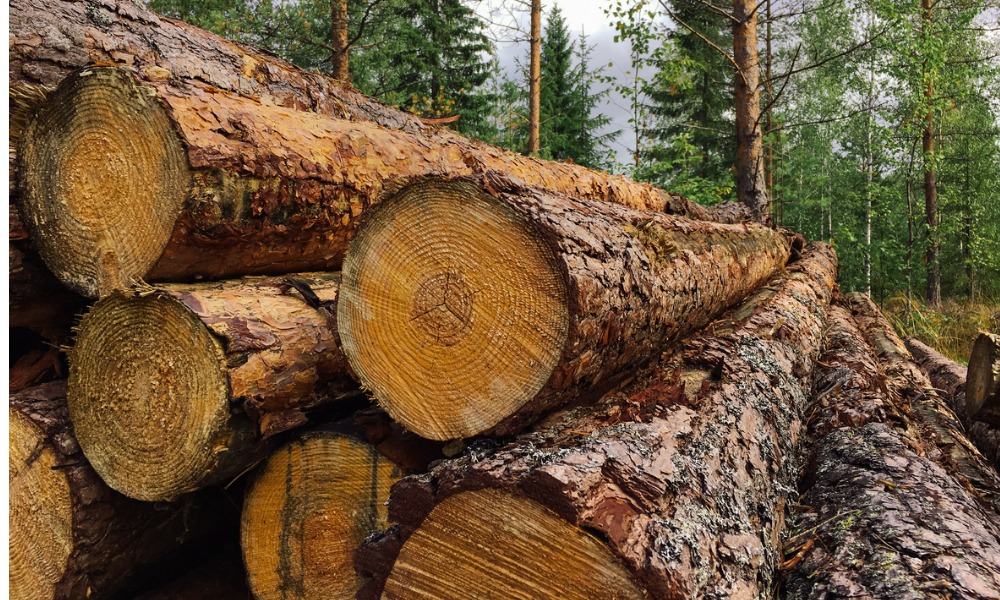Logging your own private land in Canada, or in British Columbia to be specific, is not an automatic right that is granted by law. There must be compliance with the certain requirements according to provincial laws on forestry and timber harvesting.
What are the laws for harvesting timber on private lands in Canada?
While majority of the lands in Canada are public in nature (owned or utilized by the federal or provincial governments), the small remaining percentage of privately owned lands still contribute largely to the economy of Canada.
As such, there are applicable laws and regulations on harvesting of forest resources, such as timber, even though it is exercised on private land. This regulation of private forest lands is in relation to Canada’s goal of sustainably managing forest lands, while at the same time, make use of its economic advantages.
Provincial laws on timber harvesting in private lands
Since federal forestry laws only apply to public lands owned by the federal government, the applicable laws when harvesting timber on private lands in Canada are provincial forestry laws. Where the governance and protection of Canada’s forests are largely the responsibility of the provinces, regulation of private forest lands would also be under its jurisdiction. In addition to provincial forestry laws, municipal ordinances and regulations may also apply complementarily when harvesting timber on private lands.
Know more about Canada's forestry laws and regulations, both at the federal and provincial or territorial level here.
In British Columbia (BC), the prevailing law which govern logging or timber harvesting on private lands is the Forest Act. This is in addition to the other laws governing forestlands, such as the Private Managed Forest Land Act, and other municipal regulations.
British Columbia’s Forest Act
British Columbia’s Forest Act mainly governs the management and regulation of forestlands under its jurisdiction. This includes the regulation and approval of agreements, licences, permits, and tenures pertaining to forest activities, especially timber harvesting.
With forestry being so big in BC, it is highly advised that you contact a qualified forestry lawyer in British Columbia.
Harvesting timber on privately owned forest lands may be done by the owners themselves, subject to the allowable annual cut (Section 8) whenever applicable. However, to remove such timber from private lands, the Act prescribes that it should bear the appropriate Timber Mark. The Act also provides that timber must be accompanied with the appropriate Timber Brand (Part 5) when transported from the scaling site to other locations.
As a form of forest tenure, Timber Harvesting Rights may also be granted under the Act by the Ministry of Forests to private individuals or groups to harvest timber from Crown lands and privately-owned forestlands.
Laws on property and contracts
Owing to the “private” nature of these lands, protection of private forestlands against illegal activities, such as encroachment or unconsented timber harvesting, are also governed by both federal and provincial laws on property. Additionally, common laws on contracts and properties may also govern the rights and responsibilities of parties in a contract of timber harvesting in private forestlands.
Any other contractual arrangements permitted by federal and provincial laws relating to timber harvesting may be entered into by the forest landowner and any other party, subject to the common law principles governing contractual and property rights and obligations.
What are the requirements before timber on private lands can be harvested?
Private entities or persons in British Columbia who want to harvest timber on their private lands are burdened by the law to comply with all requisites prescribed under the Forest Act. Under the said Act, the following are the necessary requirements to ensure the legality of harvesting timber on private lands:
Contract or Permit
Under BC’s Forest Act, there are different permits, licences, or agreements, collectively called Timber Harvesting Rights, that an individual, group, or entity may use to harvest timber from a Crown forestland or from a private forestland:
- Community Forest Agreements: granted to local governments, community groups, First Nations, or combination of these, to manage private lands for the benefit of the community;
- Free Use Permit: grants access to private parties to harvest minimal Crown timber for personal purposes (i.e., firewood, Christmas tree, or traditional or cultural activities);
- Forest Licences: grants harvesting rights over Crown timber within a specified timber supply area or a tree farm licence area;
- Licence to Cut: grants the right to cut a small volume of timber which have been affected either by insects, disease, or fire.
Timber Mark Certificate
To harvest and transport timber from a private land, a timber marked certificate is needed which is issued by BC’s Ministry of Forests. Timber marks, under Part 5 of BC’s Forest Act, are markings in the timber themselves which consist of unique sets of letters, numbers, or other characters stamped or written at the end of each log. When a timber is marked, it indicates the specific cutting authority (agreement, licence, tenure etc.) or specific geographic location where the timber has been harvested.
Timber mark certificates have a maximum duration of five years which may be renewed upon the expiry of the certificate.
The removal or transportation of timber without a timber mark or unscaled timber from a private land, or the illegal use of a timber mark without the express consent of the timber mark certificate-holder (e.g., their employees, truck drivers, etc.), constitutes an offence under Section 84 of the Forest Act. It is also an offence under the same Section to remove, obliterate, or alter a timber mark before the manufacturing of the said timber.
After a timber is marked, a Mark Site or Scale Site Designation is then issued by the Ministry, which allows the transportation of the marked harvested timber to a specific site or location for its scaling.
Timber Brands
When a timber has been scaled already and will be transported from the scaling site to the any other place, such as its manufacturer, the Forest Act provides that it must be conspicuously marked with the scaled timber brand (Section 86). This responsibility is jointly placed upon the holder of the timber mark certificate and the person using the brand under the consent of the certificate-holder.
Under the similar provision of the Forest Act (Section 86), it is an offense to remove or transport scaled timber from a scale site without a scaled timber brand, except upon the order of the Ministry of Forests that an exemption applies to such scaled timber. At the same time, it is also an offense to remove, alter, or obliterate a brand that has been applied to a particular timber.
To learn more about timber harvesting laws on private lands and other forestry laws, consult with the best forestry lawyers in Canada, or comment down below for any other questions.





